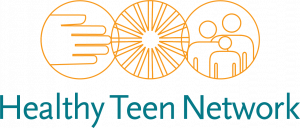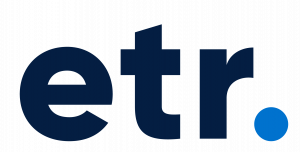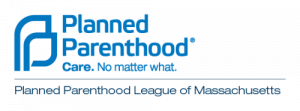This interactive workshop will allow participants to increase their comfort and knowledge about age-appropriate sexual development in young children and learn the skills they need to effectively implement lesson plans in their districts. The importance of partnering with parents and school administrators to build support for family life education for young children will be addressed. This workshop can be tailored to meet the specific needs of your group, school or agency. All content is aligned to the National Sexuality Education Standards, the National Teacher Preparation Standards for Sexuality Education, and the Professional Learning Standards for Sex Education.
Training Hub
The Sex Education Collaborative Training Hub lists trainings for sex educators, facilitators, and other professionals on best practices for sharing important information with clients and the public. From teaching anatomy inclusively to effectively addressing bias in the classroom to addressing racial justice and equity in sex education, the Training Hub includes trainings, technical assistance, and policy support from state, regional, and national leaders in the field of sex education.
Please note: The Training Hub includes both in-person and online professional trainings. If you see a training you are interested in and it isn’t listed as virtual, please reach out directly to any of our members to find out what's possible!
Trainings Offered by State-Based and National Organizations
Displaying results 106 - 110 of 137It's Elementary: Family Life Lesson Plans for Grades K-3
- Indicator 3 (K-12): Explain the differences between positive vs. shaming approaches to teaching sex education.
- Indicator 6 (K-12): Describe three strategies for actively involving parents, caregivers, and other trusted adults in a sex education program.
- Indicator 1 (K-12): Explain three reasons why it is important to respond to every question students ask when teaching sex education.
- Indicator 2 (K-12): Demonstrate the ability to effectively respond to three different types of challenging questions. (S)
- Indicator 4 (K-12): Demonstrate the ability to respond effectively to students’ values-based comments and questions. (S)
Advocates staff provides technical assistance, training and resources to national, state, and local organizations regarding youth-centered reproductive and sexual health/rights/justice public policy and communications. Policy staff draft model legislation and policy briefs, track and provide in-depth policy analysis, and can support partners in building out advocacy strategies to improve policies and practices at the federal, state, and local levels. In addition, communications staff can assist with talking points, public speaking training, and training regarding media outreach. Staff is also available to assist organizations wishing to raise the visibility of young people and their experiences and needs through social or traditional media. For more information about public policy assistance contact Diana@advocatesforyouth.org. For more information about communications assistance contact Emily@advocatesforyouth.org
How to Talk About Dual Protection
Designed for educators and clinicians, this eLearning gives participants the information and skills they need to address the increasing rates of STIs, whether working in the classroom or clinic. In this training, you will practice communicating with people who are resistant to using dual protection by using real-life scenarios tailored to your profession. Walk away feeling ready to explain dual protection and confident communicating about the barriers young people are experiencing.
- Indicator 2 (6-12): Demonstrate the steps necessary for effective external and internal condom use and how to access condoms. (S)
- Indicator 4 (6-12): Explain methods of contraception, including the latest medical advances that are popular among young people.
- Indicator 5 (6-12): Demonstrate the steps necessary for effective external and internal condom use and how to access condoms. (S).
- Indicator 7 (6-12): Identify three medically accurate and youth-friendly resources for STD/STI and HIV prevention, testing, and treatment
Sexual & Reproductive Health 101
New to teaching sexual and reproductive health education? Need a refresher? This highly interactive training prepares participants to teach sexual and reproductive health topics to youth. Participants discover new ways to engage youth in learning about anatomy, physiology, contraception and sexually transmitted infections. They also explore how values influence teaching of sensitive topics and practice answering common student questions. Facilitators also work with participants to help them understand local and state sexual health education policies and strengthen their role as a critical resource for youth.
Objectives of this course:
- Describe protective and risk factors, including stigma, associated with adolescent pregnancy and sexually transmitted infections.
- Describe youth-friendly resources related to adolescent sexual and reproductive health.
- Communicate useful and relevant content about anatomy, physiology, contraception and sexually transmitted infections.
- Apply a variety of strategies and activities for teaching sexual and reproductive health.
- Address how values and attitudes affect teaching sexual and reproductive health.
- Implement action steps to engage with the school and community to deliver high quality sexual and reproductive education.
Visit ETR's Training & TA Form to submit your request and receive cost information.
- Indicator 1 (6-12): Explain fertilization, implantation, conception, and how pregnancy occurs.
- Indicator 2 (6-12): Demonstrate the steps necessary for effective external and internal condom use and how to access condoms. (S)
- Indicator 3 (6-12): Describe the differences in mechanisms of action and access between emergency contraception and the abortion pill.
- Indicator 4 (6-12): Explain methods of contraception, including the latest medical advances that are popular among young people.
- Indicator 5 (6-12): Describe pregnancy options, including parenting, adoption, and abortion.
- Indicator 5 (K-12): Describe three effective strategies for practicing skills with students.
- Indicator 1 (6-12): Describe HIV and three common STDs/STIs, and how each can and cannot be transmitted.
- Indicator 2 (6-12): Explain that many STD/STIs do not cause symptoms and the only way to know if you have one is to be tested.
- Indicator 6 (6-12): Describe the latest medical advances in HIV and other STDs/STIs prevention and treatment.
- Indicator 1 (K-12): Describe three health (e.g. physical, social and/or emotional) and/or academic benefits of sex education for young people
Addressing the Needs of LGBTQ Youth
The ability to provide services for lesbian, gay, bisexual, transgender and queer or questioning (LGBTQ+) youth begins with an understanding of the nature of gender and sexual orientation, correct terminology, basic knowledge of the “typical” experiences of the population, and an awareness of the increased risk factors experienced by these youth. In this workshop, participants will have an opportunity to explore this important content and identify strategies for providing welcoming and affirming services appropriate for LGBTQ+ youth. The facilitator will share an overview of the theory, current issues, and research-based strategies important when working with LGBTQ+ populations. Participants will then begin to identify practices that support effective service design and delivery and will lead to the most inclusive and impactful practices. Participants also strategize ways to incorporate these practices into their services and settings.
Objectives of this course:
- Examine the key theories and terminology around gender identity/expression and sexual orientation.
- Define the stages of “coming out,” i.e. self-awareness and identity disclosure.
- Identify increased risk factors for LGBTQ+ youth.
- Strategize effective ways to work with and support LGBTQ+ youth.
- Identify resources for LGBTQ+ youth.
- Develop a personal plan of action for positively addressing the needs of LGBTQ+ youth.
Visit ETR's Training & TA Form to submit your request and receive cost information.
- Indicator 1 (K-12): Demonstrate three techniques to create an inclusive and affirming learning environment. (S)
- Indicator 1 (K-12): Explain how availability of supportive school staff, presence of Gay-Straight Alliances (GSAs), LGBQ-inclusive curricular resources, and the presence of comprehensive, enumerated anti-harassment school policies are related to improved school climate for students of all sexual orientations.
- Indicator 4 (K-12): Demonstrate the use of inclusive and affirming language. (S)
- Indicator 5 (K-12): Demonstrate the ability to intervene effectively in homophobic and other bullying comments and actions. (S)
- Indicator 6 (K-12): Explain three ways that LGBQ+ youth are at disproportionate risk for health disparities.
- Indicator 8 (K-12): Explain why it is essential to include positive portrayals of LGBQ+ people in lessons.
- Indicator 9 (K-12): Demonstrate three strategies that can be used to include positive portrayals of LGBQ+ people in lessons. (S)
- Indicator 1 (K-12): Explain how availability of supportive school staff, presence of Gay-Straight Alliances (GSAs), gender-inclusive curricular resources, and the presence of comprehensive enumerated anti-harassment school policies are related to improved school climate for students of all gender identities.
- Indicator 2 (K-12): Demonstrate the use of inclusive and affirming language. (S)
- Indicator 5 (K-12): Demonstrate the ability to intervene effectively in transphobic, sexist, misogynistic and other gender-related bullying comments and actions. (S)
Additional Trainings offered by out-of-state organizations
- ‹ previous
- 44 of 49
- next ›
Tools for Creating LGBTQ+ Inclusive Spaces
This full-day training is for professionals committed to creating inclusive spaces for people of all sexual identities and genders. This training covers vocabulary, using gender neutral language and correct pronouns, and answering tough questions, as well as provides opportunities for skill building utilizing real-life examples plus more. Any and all are welcome to attend, including educators, nurses, school nurses, human resource professionals, medical and health providers, disability service providers, youth-serving professionals, law enforcement officers, etc.
- Indicator 1 (K-12): Demonstrate three techniques to create an inclusive and affirming learning environment. (S)
- Indicator 4 (K-12): Demonstrate three strategies of a trauma-informed approach to sex education (e.g. giving trigger warnings before content on sexual assault and allowing students the right to pass as appropriate, etc.). (S)
- Indicator 2 (K-12): Demonstrate three student-centered instructional approaches that support a variety of learning styles. (S)
- Indicator 5 (K-12): Describe three effective strategies for practicing skills with students.
- Indicator 7 (K-12): Demonstrate the ability to analyze and tailor lesson plans to match the age, developmental stages, cultural backgrounds, and other identities of students. (S)
- Indicator 1 (K-12): Explain how availability of supportive school staff, presence of Gay-Straight Alliances (GSAs), LGBQ-inclusive curricular resources, and the presence of comprehensive, enumerated anti-harassment school policies are related to improved school climate for students of all sexual orientations.
- Indicator 2 (K-12): Define sexual orientation and sexual identity, including that everyone has both.
- Indicator 3 (6-12): Explain the difference between sexual orientation, sexual behavior, and sexual identity.
- Indicator 4 (K-12): Demonstrate the use of inclusive and affirming language. (S)
- Indicator 5 (K-12): Demonstrate the ability to intervene effectively in homophobic and other bullying comments and actions. (S)
- Indicator 6 (K-12): Explain three ways that LGBQ+ youth are at disproportionate risk for health disparities.
- Indicator 7 (K-12): Identify three credible, medically accurate, youth-friendly resources that can provide information or support related to sexual orientation.
- Indicator 8 (K-12): Explain why it is essential to include positive portrayals of LGBQ+ people in lessons.
- Indicator 9 (K-12): Demonstrate three strategies that can be used to include positive portrayals of LGBQ+ people in lessons. (S)
- Indicator 1 (K-12): Explain how availability of supportive school staff, presence of Gay-Straight Alliances (GSAs), gender-inclusive curricular resources, and the presence of comprehensive enumerated anti-harassment school policies are related to improved school climate for students of all gender identities.
- Indicator 2 (K-12): Demonstrate the use of inclusive and affirming language. (S)
- Indicator 3 (K-12): Define gender identity and sex assigned at birth.
- Indicator 4 (K-12): Explain how gender identity and gender expression are distinct from each other and from sexual orientation.
- Indicator 5 (K-12): Demonstrate the ability to intervene effectively in transphobic, sexist, misogynistic and other gender-related bullying comments and actions. (S)
- Indicator 6 (K-12): Explain three ways that transgender and gender expansive youth are at disproportionate risk for health disparities.
- Indicator 7 (K-12): Identify three credible, medically accurate, youth-friendly resources that can provide information or support related to transgender and gender expansive people.
- Indicator 8 (K-12): Explain why it is essential to include positive portrayals of transgender and gender expansive people in lessons.
- Indicator 9 (K-12): Demonstrate three strategies that can be used to make lessons affirming for transgender and gender expansive people. (S)




